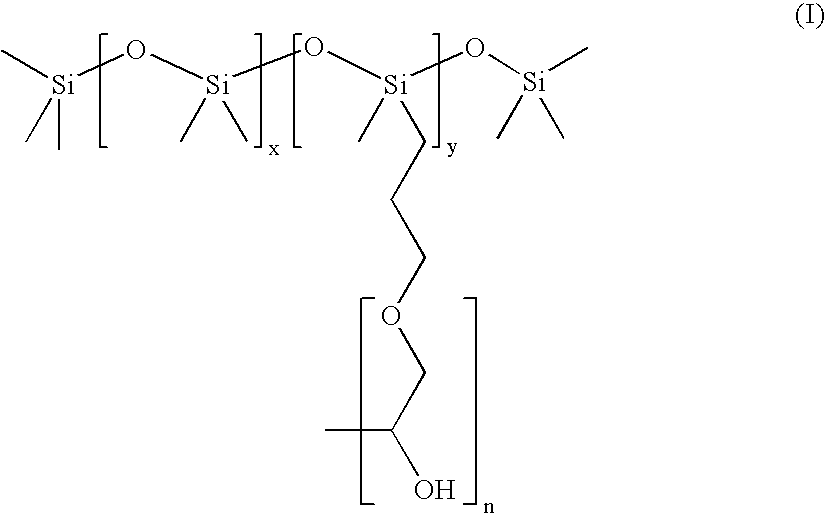Foam control agents for water-based printing inks and coatings
a technology of printing inks and control agents, applied in the direction of inks, liquid degasification, separation processes, etc., can solve the problems of poor efficacy and the inability of polypropylene glycol to break foam, and achieve the effect of poor efficacy and higher efficacy
- Summary
- Abstract
- Description
- Claims
- Application Information
AI Technical Summary
Benefits of technology
Problems solved by technology
Method used
Image
Examples
example 1
Preparation of Foam Control Agent
[0033] A foam control agent was prepared by mixing the components set forth in Table I. Approximately one-half of the carrier was heated, then the one-half of the EBS was added. The second half of each component was added in the same order, followed by the SO. The POEOA was added next and finally the SC. The additions occurred under high agitation.
TABLE IComponentAmount (pbw)PP89.0EBS4.85SO0.15PEOA4.0SC2.0Total100.0
[0034] The foam control agent was tested using the Waring blender test, which is described as follows:
Waring Blender Test
[0035] First, 150 grams of ink base are added to a half-pint can. Then a pre-determined amount of foam control agent are added to a Cowles mixer and mixed for 15 minutes. This mixture is then transferred into the container of a Waring blender and the blender speed is set at maximum. The mixture is mixed for sixty seconds.
[0036] Thereafter, 100 ml of the mixture from the Waring blender is immediately taken for densi...
PUM
| Property | Measurement | Unit |
|---|---|---|
| weight percent | aaaaa | aaaaa |
| weight percent | aaaaa | aaaaa |
| temperatures | aaaaa | aaaaa |
Abstract
Description
Claims
Application Information
 Login to View More
Login to View More - R&D
- Intellectual Property
- Life Sciences
- Materials
- Tech Scout
- Unparalleled Data Quality
- Higher Quality Content
- 60% Fewer Hallucinations
Browse by: Latest US Patents, China's latest patents, Technical Efficacy Thesaurus, Application Domain, Technology Topic, Popular Technical Reports.
© 2025 PatSnap. All rights reserved.Legal|Privacy policy|Modern Slavery Act Transparency Statement|Sitemap|About US| Contact US: help@patsnap.com


